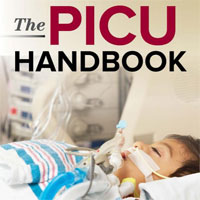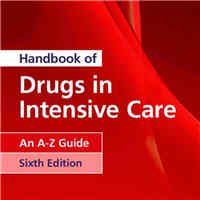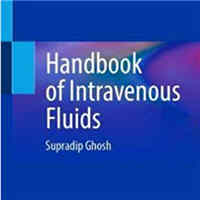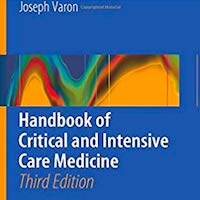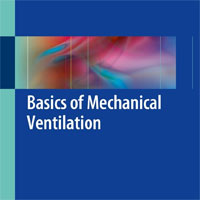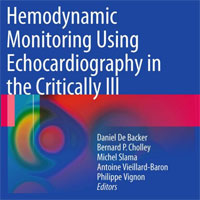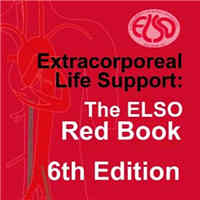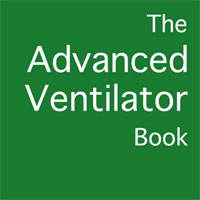Tag: intubation
Interhospital Transfer of COVID-19 Patients Treated with High-flow Nasal Oxygen Therapy
At the start of the COVID-19 pandemic, early intubation was recommended on the basis of worldwide observations of severe hypoxemia. However, some patients were ultimately able to benefit from high-flow nasal cannula (HFNC)... read more
Waveform Capnography in the Intubated Patient
Waveform capnography is emerging as a standard monitoring tool to improve safety among intubated patients. Failure to use waveform capnography contributed to >70% of ICU-related airway deaths in the NAP4 audit. Capnography... read more
Continuous Pneumatic Regulation of Tracheal Cuff Pressure to Decrease VAP in Mechanically Ventilated Patients
Continuous regulation of cuff pressure of the tracheal tube using a pneumatic device was not superior to routine care in preventing Ventilator-associated pneumonia (VAP) in patients with severe trauma. A total of 434 patients... read more
Predicting Adverse Outcomes in COVID-19 Patients Using BV5%
Evidence suggests that vascular inflammation and thrombosis may be important drivers of poor clinical outcomes in patients with COVID-19. We hypothesized that a significant decrease in the percentage of blood vessels with... read more
Adaptive Randomized Controlled Trial of Non-invasive Respiratory Strategies in ARF Patients with COVID-19
Continuous positive airway pressure (CPAP), compared with conventional oxygen therapy, reduced the composite outcome of intubation or death within 30 days of randomisation in hospitalized adults with acute respiratory failure... read more
Intubation Timing As Determinant Of Outcome in Patients with ARDS By COVID-19 Infection
In COVID-19 patients, late intubation, Pafi ... read more
Artificial Intelligence Hold Promise in the ICU
In a 2018 article entitled “Human Cognitive Limitations”, the University of Utah's Alan Morris estimated the number of variables an intensivist has to take into account for a patient on mechanical ventilation. He... read more
New Device for Intubation Through a Laryngeal Mask Airway
On review of the literature, it is abundantly obvious that an endotracheal tube (ETT) with a posterior-facing bevel and curved or tapered tip to center the tube on the scope and reduce hang-up is ideal for intubation over... read more
Laryngeal Radiation Fibrosis: A Case of Failed Awake Flexible Fibreoptic Intubation
In patients with severe upper airway narrowing because of radiation fibrosis, an awake fibreoptic intubation may be impossible and a tracheotomy is the only means of securing this airway; however, there may be no evident... read more
Breath-holding as a Novel Approach to COVID-19 Risk Stratification
Despite considerable progress, it remains unclear why some patients admitted for COVID-19 develop adverse outcomes while others recover spontaneously. Clues may lie with the predisposition to hypoxemia or unexpected absence... read more
Evolving Changes in Mortality of Critically Ill with COVID-19 Over 8 Months
Age and mortality rates have declined over the first 8 months of the pandemic. The use of non-invasive respiratory support (NIRS) as the first respiratory support measure was associated with survival, but causal inference... read more
Non-invasive Respiratory Support and P-SILI in COVID-19
Coronavirus disease 2019 (COVID-19) pneumonia is associated with hypoxemic respiratory failure, ranging from mild to severe. Due to the worldwide shortage of intensive care unit beds, a relatively high number of patients... read more
Protocol and statistical analysis plan for the PREPARE II randomised clinical trial
Cardiovascular collapse is a common complication during tracheal intubation of critically ill adults. Whether administration of an intravenous fluid bolus prevents cardiovascular collapse during tracheal intubation remains... read more
Rapid Sequence Induction: Where Did the Consensus Go?
The conduct of Rapid Sequence Induction (RSI) in current emergency practice is far removed from the original descriptions of the procedure. Despite this, the principles – rapid delivery of a definitive airway and avoiding... read more
Prone Positioning in Spontaneously Breathing Subjects With Moderate or Severe ARDS During Invasive Ventilation
In a retrospective analysis of consecutive intubated subjects with moderate or severe ARDS, related or not to COVID-19, spontaneous breathing during prone positioning (PP) was well tolerated and achieved significant improvement... read more
Prone Positioning of Nonintubated Patients with COVID-19
Despite the significant variability in frequency and duration of prone positioning and respiratory supports applied, prone positioning was associated with improvement in oxygenation variables without any reported serious... read more
Discharged IMV COVID-19 Survivors Not Functionally Independent
The majority of invasive mechanical ventilation (IMV) COVID-19 survivors were not functionally independent at discharge and required significant follow-up medical care. The COVID-19 circumstance has placed constraints on... read more
Expiratory Flow Limitation During Mechanical Ventilation
Expiratory flow limitation (EFL) is present when the flow cannot rise despite an increase in the expiratory driving pressure. The mechanisms of EFL are debated but are believed to be related to the collapsibility of small... read more
Assess the Intensity of Inspiratory Efforts Using CVP Waveforms
Real case: You are passing by the room of an awake mechanically ventilated patient with advanced IPF. Peeking in from outside the room, the following CVP waveform catches your attention. In a recent post, we discussed... read more
Comparison of the Efficacy and Safety of Cuffed vs. Uncuffed Endotracheal Tubes for Infants in the Intensive Care
There was no difference in the primary outcome, though percentage time spent in optimal leak range was significantly higher in cuffed uncuffed endotracheal tube (ETT) group. Cuffed ETTs reduced reintubations to optimise ETT... read more
Association of Low Baseline Diaphragm Muscle Mass With Prolonged Mechanical Ventilation and Mortality Among Critically Ill Adults
In this study, low baseline diaphragm muscle mass in critically ill patients was associated with prolonged mechanical ventilation, complications of acute respiratory failure, and an increased risk of death in the hospital. A... read more
Relationship Between Skeletal Muscle Area and Density and Clinical Outcome in Adults Receiving VV-ECMO
Low skeletal muscle index at the commencement of venovenous extracorporeal membrane oxygenation (VV-ECMO) was associated with a longer duration of venovenous extracorporeal membrane oxygenation, whereas preserved skeletal... read more


